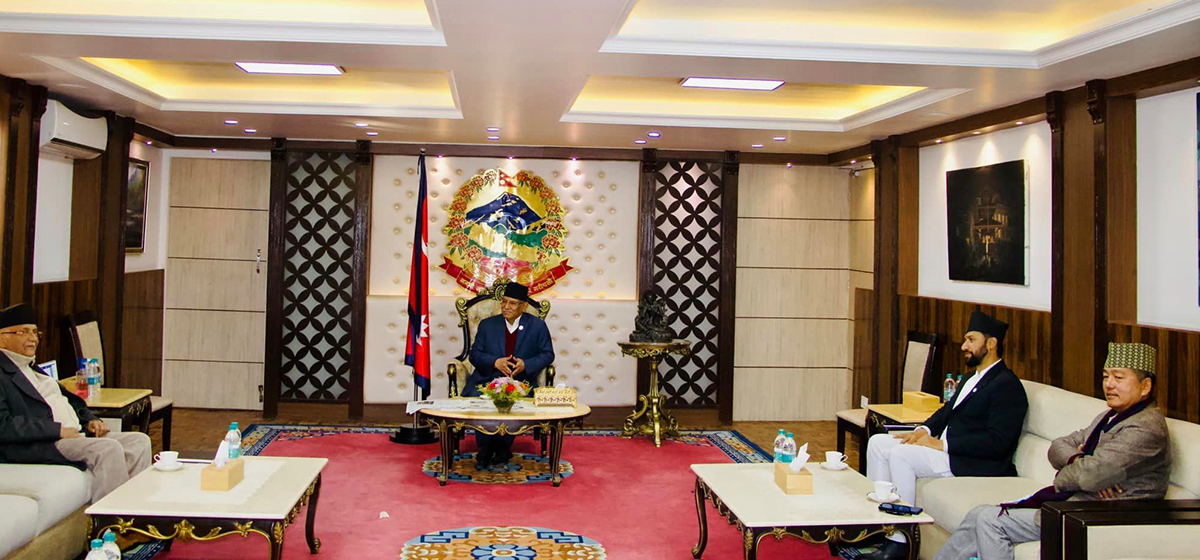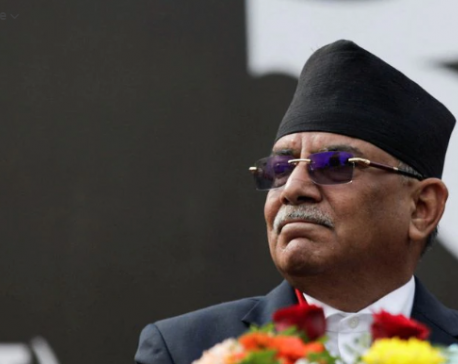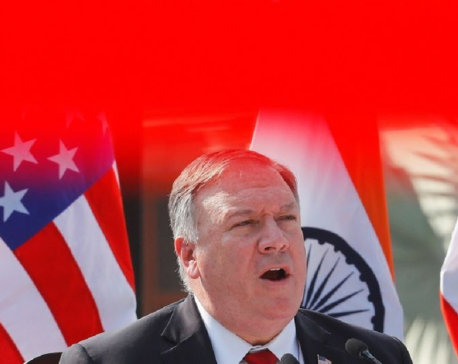
OR
Opinion
Fractured Popular Mandate and Political Stability
Published On: January 2, 2023 08:40 AM NPT By: Rajaram Bartaula

With the formation of a new government, it seems that in the diplomatic contest between the three global powers in Nepal - India, China and the USA - China came victorious!
The results of the last elections are mixed with a fractured popular mandate. The traditional parties with big names have been punished, to some extent, by the electoral choice. Most astonishingly, the Rastriya Swatantra Party (RSP) with ‘bell’ as its election symbol, won 20 seats including seven under the FPTP category and 13 under the proportional representation electoral system. Not only was it able to get recognition as a national party but also was able to secure the fourth largest party position in the House of Representatives (HoR) after the Nepali Congress, CPN-UML, and CPN (Maoist Centre). The RSP was registered at the Election Commission only on July 1, 2022, only some four and half months ahead of the election to the November 20 polls.
Emergence of new regional parties
Two regional parties emerged after 2019 - Janamat Party led by CK Raut in March 2019 and Nagarik Unmukti Party led by Ranjita Shrestha in January 2022 - won more seats than expected in the elections. The Janamat Party became successful to secure five seats in the House of Representatives – one seat under the FPTP and four under the PR electoral system. Similarly, Nagarik Unmukti Party has secured three seats under the FPTP category in the recently concluded elections.
Although these two regional parties entered national politics, other regional parties that had emerged after the political change in 2006 such as the Janata Samajbadi Party and Loktantrik Samajbadi Party failed to garner the people’s support in Madhesh Province this time. During the local level election held in May, 2022, voters put forth their opinion with dismay and disappointment for the existing traditional parties for their failures to deliver.
Ordinary people were increasingly frustrated with the traditional parties and they provided space to reactive politics in the federal elections. The election of new parties which lack political experience and base has certainly raised questions about the direction Nepali politics is headed to. Punishing the old parties and voting for the unproven and untested parties and leaders is like heading toward an uncharted path, although the people want to see the newly-emerged political parties act differently and prove their strengths.
After a series of backdoor negotiations, intrigues and political maneuverings, we finally have a new government led by Pushpa Kamal Dahal, chairman of the CPN (Maoist Centre). Prior to the formation of this government, there was rumor that emissaries of a certain foreign government were actively involved to mediate between Deuba and Oli, the chiefs of the two leading parties Nepali Congress and CPN-UML, respectively, to form a government. But given the fractured mandate in the newly-elected parliament, Pushpa Kamal Dahal, chairman of the third largest party in parliament, was able to become the country’s 44th Prime Minister, with the support of the UML and other parties.
With the formation of a new ruling political front, not only did the old alliance led by the Nepali Congress break but also the latter lost the opportunities to form a government under its leadership in the center and provinces, as well as securing other vital positions of the state.
In other democratic countries, the party leader takes responsibility for any success or failure, and in any case of loss to the party, the leader immediately takes responsibility and steps down on moral ground. But the Nepali politicians never seem to think this way and it would be irrational to expect it from them.
While congratulating the new Prime Minister Dahal, the northern neighbor seems satisfied with the unfolding events in Nepal and expressed its expectation that the two countries could work together in materializing the BRI projects under the leadership of Dahal. It seems that in the diplomatic contest between the three global powers - the USA, India and China in Nepal - China came victorious! Complemented with the internal and external complexities, handling the government in such a precarious time of economic instability and downturn seems daunting for the newly sworn-in Prime Minister. The challenge is as difficult as walking a tightrope.
The parliamentary system of governance is all about commanding a majority in parliament. With this in mind, the present popular mandate was not in anyone’s favor with the required majority to form the government singlehandedly. The largest party Nepali Congress has 89 seats followed by the Nepal Communist Party-UML which has 78 seats. In this scenario, forming an alliance with other fringe parties was a normal phenomenon and the old five-party alliance led by the Nepali Congress was expected to form the government. Contrary to this common expectation, the political scenario abruptly changed when a new alliance of seven parties emerged out of the blue.
Breaking the existing alliance with the Nepali Congress and joining hands with the UML-led alliance of seven parties- Maoist Centre, Rastriya Swatantra Party, Rastriya Prajatantra Party, Janata Samajbadi Party, Nagarik Unmukti Party, Janamat Party- with a divergent ideological mixture, would increase the probability of political divide and factionalism under ideological lines; one led by the Nepali Congress, a democratic front, and the other led by the CPN-UML, a left front. It may gradually develop toward a culture in a bipartition line if it lasts for a long time and proceeds further in harmony.
However, having a seven-party alliance which holds divergent opinions and ideological bases with regard to federalism - UML pleads for a directly-elected prime minister, Maoist Centre wants all proportional elections and a presidential system, Rastriya Swantranta Party has not any firm opinion on federalism and did not take part in the provincial election, Rastriya Prajatantra Party principally follows Hinduism and constitutional monarchy and advocates the reinstatement of monarchy and scrapping federalism. Therefore the road ahead for the current ruling alliance looks bumpy and troublesome.
External challenges
As much as the domestic front is problematic, the external front is also not smooth as presumed. Notwithstanding the past experience, it is highly likely that the invisible hands in Nepali politics will try to create chaos and instability, so that they could play their roles and fulfill their nefarious intentions of keeping unstable Nepal under their influence as a weak nation.
Most importantly, with all the political development taking place in the midst of the electoral outcome, once again the expectation of the people and frustrated voters for change would not be materialized with the same old faces at the helm of power. The fractured popular mandate only contributed to instability, contrary to the expectation for stability, the institutionalization of the democratic system in general and federalism in particular complemented with dynamism and commitment to change. Once again, the realization of the dreams of disenchanted youths seems far away. With the fractured results, the country has to suffer for yet another five years.
You May Like This

Nepal's new govt seeks to balance its ties with India, China in growth pursuit
KATHMANDU, Dec 26: Nepal's new government, led by a former Maoist rebel commander, will try to balance ties with its... Read More...

U.S. warns of threat posed by China, signs military pact with India
NEW DELHI, Oct 27: The United States and India signed a pact to share sensitive satellite and map data on... Read More...

Democracies in danger
India, the UK, and America are each “model” democracies. In each of these great democracies, minorities are under attack, as... Read More...











Just In
- Challenges Confronting the New Coalition
- NRB introduces cautiously flexible measures to address ongoing slowdown in various economic sectors
- Forced Covid-19 cremations: is it too late for redemption?
- NRB to provide collateral-free loans to foreign employment seekers
- NEB to publish Grade 12 results next week
- Body handover begins; Relatives remain dissatisfied with insurance, compensation amount
- NC defers its plan to join Koshi govt
- NRB to review microfinance loan interest rate








Leave A Comment